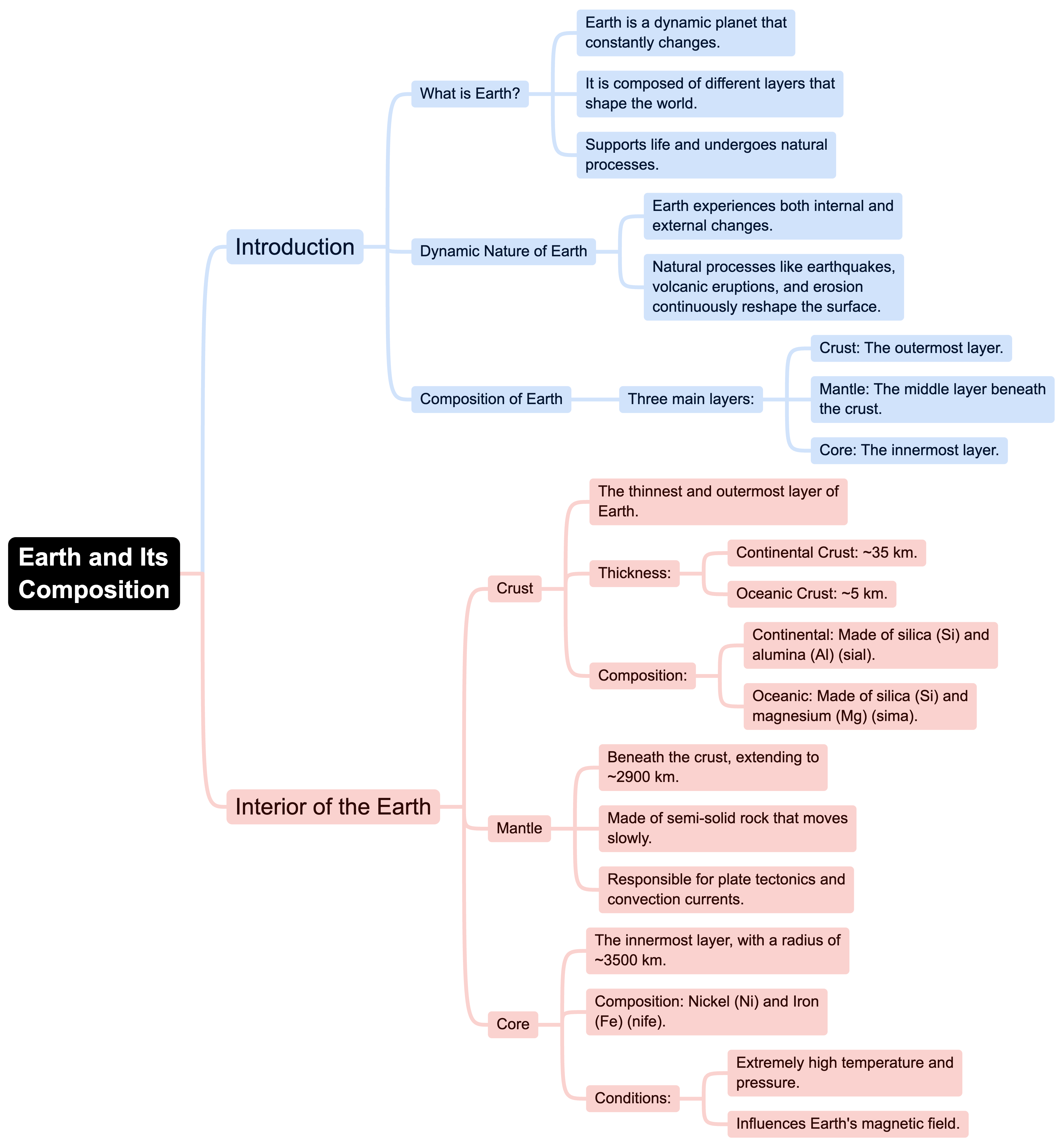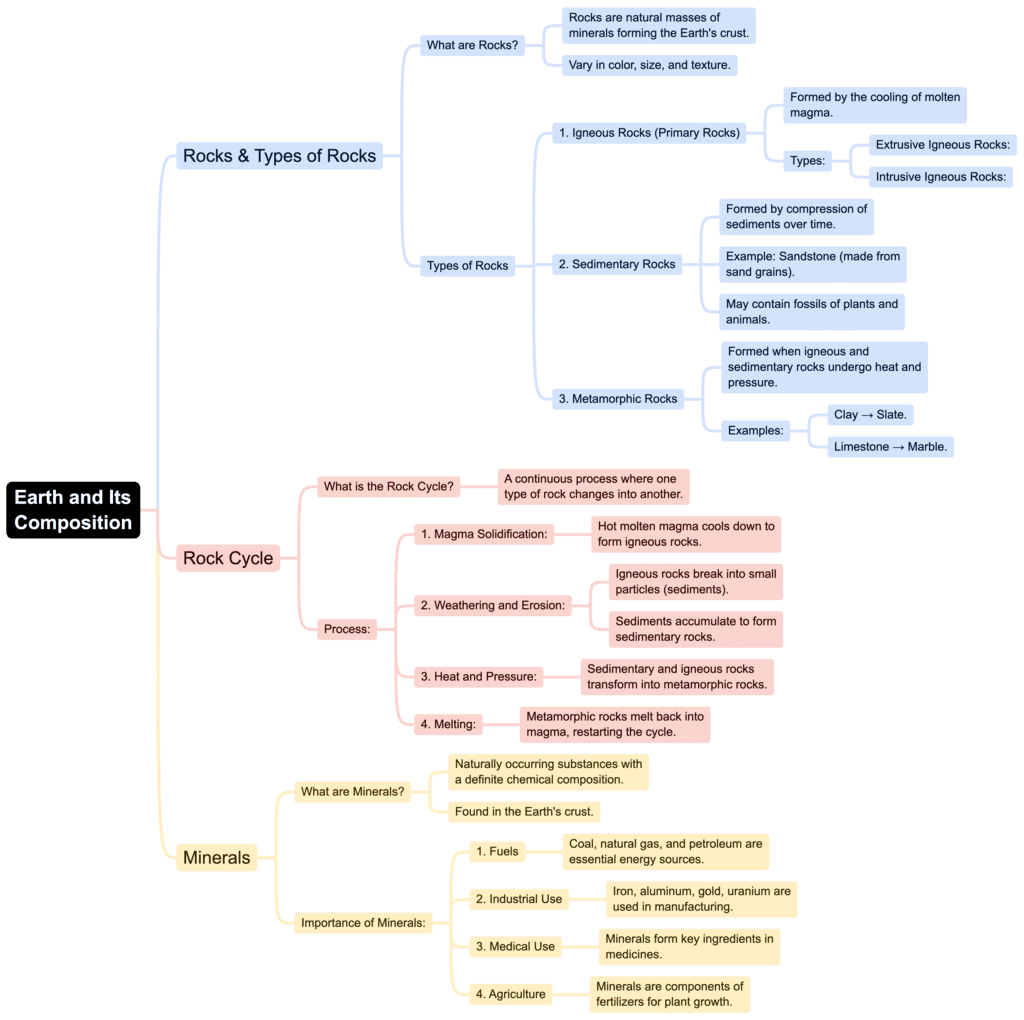UPSC Exam > UPSC Notes > Class 6 to 12 NCERT Mindmaps for UPSC Preparation > Mind Map: Inside our Earth
Mind Map: Inside our Earth | Class 6 to 12 NCERT Mindmaps for UPSC Preparation PDF Download


The document Mind Map: Inside our Earth | Class 6 to 12 NCERT Mindmaps for UPSC Preparation is a part of the UPSC Course Class 6 to 12 NCERT Mindmaps for UPSC Preparation.
All you need of UPSC at this link: UPSC
FAQs on Mind Map: Inside our Earth - Class 6 to 12 NCERT Mindmaps for UPSC Preparation
| 1. What are the main layers of the Earth? |  |
Ans. The Earth is composed of three main layers: the crust, the mantle, and the core. The crust is the outermost layer where we live, the mantle lies beneath the crust and is made of semi-solid rock that flows slowly, and the core is divided into the outer core, which is liquid, and the inner core, which is solid and composed primarily of iron and nickel.
| 2. How do we know what is inside the Earth? |  |
Ans. Scientists know about the Earth's interior through various methods such as seismic waves generated by earthquakes. These waves travel through the Earth and are analyzed to infer the properties of different layers. Additionally, studies of volcanic eruptions and the materials brought to the surface also provide insights into the Earth's composition.
| 3. What is the significance of the Earth's mantle? |  |
Ans. The mantle is significant because it is responsible for the movement of tectonic plates, which causes earthquakes and volcanic activity. It contains a large amount of the Earth's mass and plays a crucial role in the geological processes that shape the planet's surface over time.
| 4. What is the difference between the outer core and the inner core? |  |
Ans. The outer core is a liquid layer composed mainly of molten iron and nickel, while the inner core is solid and also made primarily of iron and nickel. The outer core is responsible for generating the Earth's magnetic field through the movement of molten metals, whereas the inner core remains solid due to immense pressure.
| 5. How do tectonic plates affect the Earth's surface? |  |
Ans. Tectonic plates affect the Earth's surface by constantly moving and interacting with each other. Their movement can lead to the formation of mountains, earthquakes, and volcanic eruptions. The boundaries where these plates meet are often sites of significant geological activity and play a vital role in the Earth's dynamic nature.
Related Searches
















